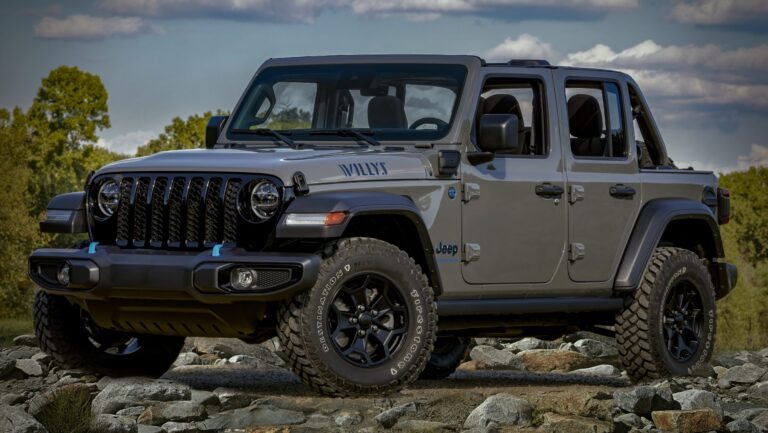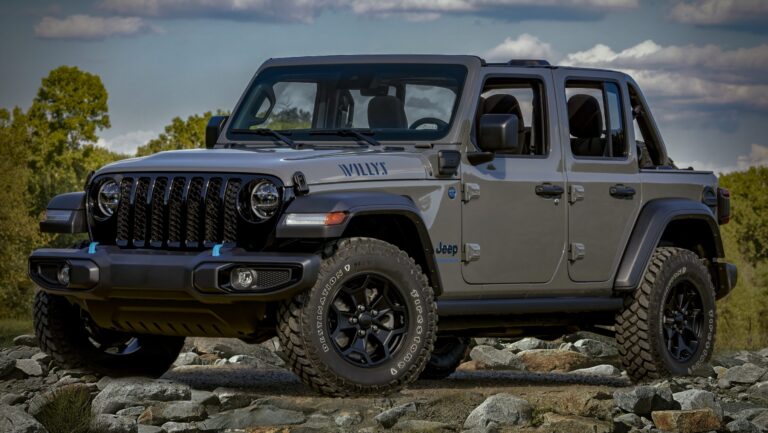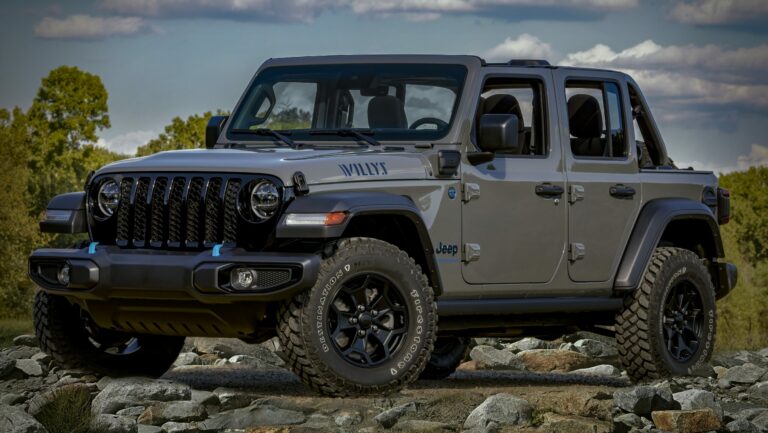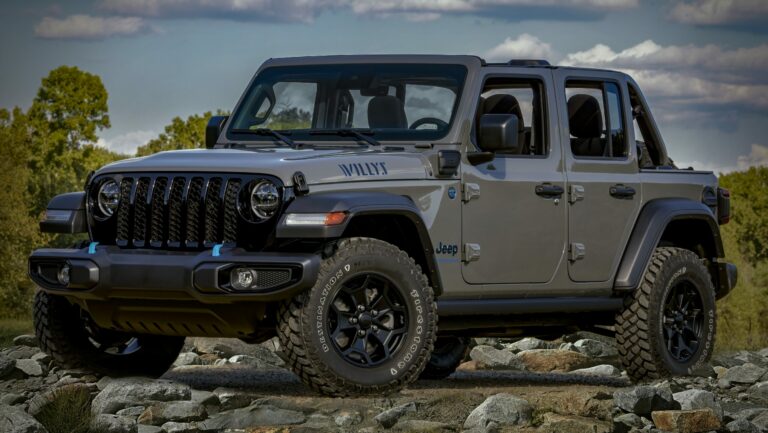2 Door Jeep Wrangler By Year: A Comprehensive Guide to the Iconic Off-Roader
2 Door Jeep Wrangler By Year: A Comprehensive Guide to the Iconic Off-Roader jeeps.truckstrend.com
The Jeep Wrangler is more than just a vehicle; it’s an enduring symbol of adventure, freedom, and unparalleled off-road capability. While the four-door variant has gained immense popularity in recent decades, the classic two-door Jeep Wrangler remains the purist’s choice, embodying the original spirit of the Willys MB. Understanding the evolution of the 2-door Jeep Wrangler by year is crucial for enthusiasts, prospective buyers, and collectors alike. Each generation and even individual model years bring distinct characteristics, engineering improvements, and varying levels of desirability, making a detailed exploration of its timeline essential for making informed decisions and appreciating its rich heritage.
This comprehensive guide will delve into the storied history of the 2-door Jeep Wrangler, dissecting its journey from a utilitarian workhorse to a modern-day icon. We’ll explore the defining features of each generation, highlight significant annual changes, offer practical advice, and provide a valuable reference for anyone interested in this legendary vehicle.
2 Door Jeep Wrangler By Year: A Comprehensive Guide to the Iconic Off-Roader
The Genesis: From Willys to Wrangler (A Brief Preamble)
Before diving into the Wrangler itself, it’s vital to acknowledge its direct predecessor: the CJ (Civilian Jeep) series. Born from the legendary Willys MB of World War II, the CJs (CJ-2A, CJ-3A, CJ-5, CJ-7, CJ-8 Scrambler) laid the groundwork for the modern Wrangler. They established the short wheelbase, removable doors, fold-down windshield, and open-air experience that defines the Jeep identity. The transition from CJ to Wrangler in 1987 marked a new era of refinement and on-road manners, while fiercely preserving the core off-road DNA.
YJ Generation (1987-1995): The Rectangular Revolution
The first generation to officially bear the "Wrangler" name, the YJ, made its debut in 1987. It was a significant departure from the CJ, most notably with its controversial rectangular headlights – a feature that still sparks debate among purists. Underneath, it retained the leaf-spring suspension of its predecessors but offered a wider stance and a more comfortable interior.
- Key Features: Square headlights, leaf-spring suspension (front and rear), optional full doors with roll-up windows, improved interior comfort compared to CJ.
- Engines: Primarily the 2.5L AMC 150 I4 (standard) and the more powerful 4.2L AMC 258 I6 (carbureted, later fuel-injected 4.0L I6 introduced in 1991).
- Notable Annual Changes:

- 1987: Introduction of the Wrangler YJ.
- 1991: Introduction of the fuel-injected 4.0L High Output (HO) I6 engine, offering significantly more power and reliability.
- 1992: Anti-lock brakes became an option.
- 1994: A new automatic transmission option was introduced.
- Pros: Classic Jeep looks (despite the square lights for some), robust 4.0L engine, readily available parts.
- Cons: Stiff leaf-spring ride, prone to rust, older technology.
TJ Generation (1997-2006): Round Lights and Coil Springs
After a brief hiatus in 1996, the TJ Wrangler arrived in 1997, addressing many of the YJ’s shortcomings and bringing back the beloved round headlights. The most significant engineering change was the adoption of a modern coil-spring suspension system on all four corners, drastically improving ride quality and articulation. The TJ is widely regarded as one of the best Wrangler generations for its blend of classic simplicity and enhanced comfort.
- Key Features: Return to round headlights, revolutionary Quadra-Coil suspension, improved interior ergonomics, optional full-frame doors.
- Engines: Primarily the 2.5L AMC 150 I4 (until 2002) and the highly revered 4.0L AMC 242 I6.
- Notable Annual Changes:
- 1997: TJ launch with 2.5L and 4.0L engines.
- 2003: Introduction of the legendary Rubicon trim level, featuring Dana 44 axles front and rear, locking differentials, a 4:1 transfer case, and 31-inch tires – setting a new benchmark for factory off-road capability. Also, a new 5-speed manual transmission was introduced.
- 2004: The LJ (Unlimited) model was introduced, a long-wheelbase two-door variant offering more cargo space and a smoother ride, though still officially a 2-door.
- 2005: The 4-speed automatic transmission was updated.
- Pros: Excellent off-road capability (especially Rubicon), comfortable coil-spring ride, highly reliable 4.0L engine, vast aftermarket support.
- Cons: Can be prone to rust, 2.5L engine is underpowered, aging interior technology.
JK Generation (2007-2018): Modernization and Expansion
The JK generation represented the most significant evolution of the Wrangler to date, growing in size and offering a much more refined on-road experience. While the 4-door "Unlimited" model truly took off, the 2-door JK maintained its shorter wheelbase for enhanced maneuverability on tight trails. It introduced modern amenities, improved safety features, and more powerful engines over its lifespan.
- Key Features: Larger body, wider stance, improved safety features (ABS, stability control), more comfortable and quieter interior, available navigation and power windows/locks.
- Engines:
- 2007-2011: 3.8L EGH V6 engine (a minivan engine, often criticized for being underpowered and noisy).
- 2012-2018: 3.6L Pentastar V6 engine (a significant upgrade, offering more power and better fuel economy).
- Notable Annual Changes:
- 2007: JK launch with 3.8L V6.
- 2011: Major interior refresh, significantly improving material quality and design.
- 2012: Introduction of the much-improved 3.6L Pentastar V6 engine. This is a highly sought-after year for the JK.
- 2013: Optional Uconnect system with navigation.
- 2017: LED headlights and fog lights became available on some trims.
- Pros: Modern amenities, improved safety, better on-road manners, strong 3.6L Pentastar engine, still highly capable off-road.
- Cons: 3.8L engine is a weak point for earlier models, increased weight, can feel large compared to previous generations.
JL Generation (2018-Present): Refinement and Innovation
The current generation, the JL, builds upon the JK’s success, refining nearly every aspect while retaining the iconic Wrangler silhouette. It boasts a lighter yet stronger frame, more advanced powertrains, cutting-edge technology, and even greater off-road prowess, including a more capable Rubicon model. The JL maintains the traditional 2-door short-wheelbase variant, ensuring the original spirit lives on.
- Key Features: Lighter high-strength steel frame, redesigned interior with modern tech, improved aerodynamics, multiple engine options, advanced safety features, easier removable top and doors.
- Engines:
- 3.6L Pentastar V6 (standard, with eTorque mild-hybrid option).
- 2.0L Turbo I4 (optional, with eTorque, offering good torque and fuel economy).
- Later additions: 3.0L EcoDiesel V6 (discontinued for 2-door models), 6.4L HEMI V8 (Rubicon 392 – 4-door only), 2.0L Turbo 4xe PHEV (Plug-in Hybrid – 4-door only). For the 2-door, the 3.6L and 2.0L are the main options.
- Notable Annual Changes:
- 2018: JL launch with 3.6L V6 and 2.0L Turbo options.
- 2020: Introduction of the EcoDiesel V6 (primarily for 4-door, limited 2-door availability).
- 2021: Addition of the Xtreme Recon package (4-door only) and the Rubicon 392 (4-door only).
- 2024: Significant refresh for the JL, including a new grille design, standard side curtain airbags, improved infotainment with a 12.3-inch touchscreen, and new trim levels.
- Pros: Most refined Wrangler yet, advanced technology, highly capable off-road, diverse engine options, improved fuel economy (2.0L), enhanced safety.
- Cons: Higher price point, more complex systems (can be costly to repair), larger overall size than older 2-doors.
Important Considerations When Buying a 2-Door Wrangler By Year
Choosing the right 2-door Wrangler involves more than just picking a favorite generation. Here’s what to consider:
- Rust: Jeep Wranglers, especially older models, are notorious for rust. Check the frame, body mounts, floorboards, and suspension components thoroughly.
- Maintenance History: A well-maintained Wrangler will serve you better. Look for detailed service records.
- Modifications: Many Wranglers are modified. While some mods are beneficial (e.g., quality lift kits, upgraded axles), poorly done modifications can lead to serious issues. Inspect modifications carefully.
- Intended Use: Will it be a daily driver, a weekend off-roader, or a dedicated trail rig? This will influence your ideal year and trim level. Newer models offer better daily drivability, while older ones might be simpler to work on for dedicated off-road builds.
- Engine Choice: Research the specific engines offered in your target year. The 4.0L I6 (TJ) and 3.6L Pentastar V6 (JK/JL) are generally highly regarded for reliability and performance.
- Budget: Older Wranglers are more affordable upfront but may require more immediate maintenance. Newer models are more expensive but come with warranties and modern features.
Practical Advice for Owners and Buyers
- Research Specific Model Years: Don’t just pick a generation; research common issues and improvements for the exact year you’re considering. Online forums (e.g., JL Wrangler Forums, JK-Forum, JeepForum) are invaluable resources.
- Pre-Purchase Inspection: Always get a pre-purchase inspection from a trusted mechanic familiar with Jeeps, especially for used models.
- Test Drive Thoroughly: Pay attention to steering feel, suspension noise, engine performance, and transmission shifts.
- Budget for Aftermarket: A significant part of the Wrangler experience is customization. Factor in money for potential upgrades or necessary repairs.
- Join the Community: The Jeep community is vast and welcoming. Connecting with other owners can provide invaluable advice, technical support, and camaraderie.
2 Door Jeep Wrangler Estimated Used Price Guide By Year/Generation
This table provides a generalized estimate for used 2-door Jeep Wranglers in good condition. Prices vary significantly based on mileage, condition, trim level (Sport, Sahara, Rubicon), modifications, and geographic location. These are not definitive prices but rather a broad range to give you an idea.
| Generation | Years | Key Features / Common Engines | Estimated Used Price Range (USD) |
|---|---|---|---|
| YJ | 1987-1995 | Square headlights, leaf springs, 2.5L I4, 4.0L I6 | $5,000 – $15,000 |
| TJ | 1997-2006 | Round headlights, coil springs, 2.5L I4, 4.0L I6 (Rubicon from 2003) | $8,000 – $25,000 (Rubicons often higher) |
| JK | 2007-2018 | Larger size, modern interior, 3.8L V6 (early), 3.6L V6 (late) | $12,000 – $35,000 (3.6L models command higher prices) |
| JL | 2018-Present | Refined design, advanced tech, 3.6L V6, 2.0L Turbo I4 | $25,000 – $50,000+ (Newer models / higher trims) |
Note: Rare editions, low-mileage examples, or heavily modified vehicles can fall outside these ranges.
Frequently Asked Questions (FAQ) about the 2-Door Jeep Wrangler
Q1: Which 2-door Wrangler year is best for off-roading?
A1: For factory capability, the TJ Rubicon (2003-2006) and the JL Rubicon (2018-present) are top contenders. The TJ Rubicon offers a simpler, more mechanical experience, while the JL Rubicon combines extreme capability with modern technology. Any 2-door Wrangler can be made highly capable with aftermarket modifications.
Q2: Which year has the most reliable engine?
A2: The 4.0L inline-six engine found in the TJ (1997-2006) is legendary for its bulletproof reliability and longevity. The 3.6L Pentastar V6 in JK (2012-2018) and JL (2018-present) models is also generally very reliable and offers more power. The 3.8L V6 in early JKs (2007-2011) is considered less robust and more prone to oil consumption issues.
Q3: Are older 2-door Wranglers good daily drivers?
A3: Older Wranglers (YJ, TJ) can be daily driven, but they offer a much rougher, noisier, and less refined experience compared to modern vehicles. They lack many safety features and creature comforts. JK and especially JL 2-doors are significantly better as daily drivers due to improved ride quality, quieter cabins, and modern amenities.
Q4: What are the common rust spots on 2-door Wranglers?
A4: Common rust areas include the frame (especially near control arm mounts and skid plates), body mounts, floorboards (under carpets), rocker panels, and around the fender flares. Thoroughly inspect these areas, particularly on YJ and TJ models.
Q5: How much does it cost to maintain a 2-door Wrangler?
A5: Maintenance costs vary by year and condition. Older models might require more frequent repairs due to age and wear. Generally, Wranglers are known for their simplicity, making routine maintenance relatively affordable. However, specialized off-road components or complex modern systems (in JLs) can be more expensive to repair or replace. Budget for potential upgrades and off-road-related wear and tear if you plan to hit the trails.
Q6: Can I easily remove the doors and top on all 2-door Wrangler models?
A6: Yes, the removable doors and tops are signature features across all Wrangler generations (YJ, TJ, JK, JL). The process has become progressively easier with newer generations, with the JL offering the most user-friendly design for removing the soft top, hardtop panels, and doors.
Conclusion
The 2-door Jeep Wrangler’s journey through the years is a testament to its timeless appeal and adaptability. From the utilitarian YJ to the technologically advanced JL, each generation has contributed to the legend, while fiercely guarding the core tenets of open-air freedom and unmatched off-road capability. Understanding the unique characteristics of the 2-door Jeep Wrangler by year is not just about appreciating its history; it’s about making an informed choice that aligns with your needs, budget, and adventurous spirit. Whether you seek a raw, classic trail machine or a refined daily driver that can still conquer any terrain, there’s a 2-door Wrangler out there waiting to start its next adventure with you.




